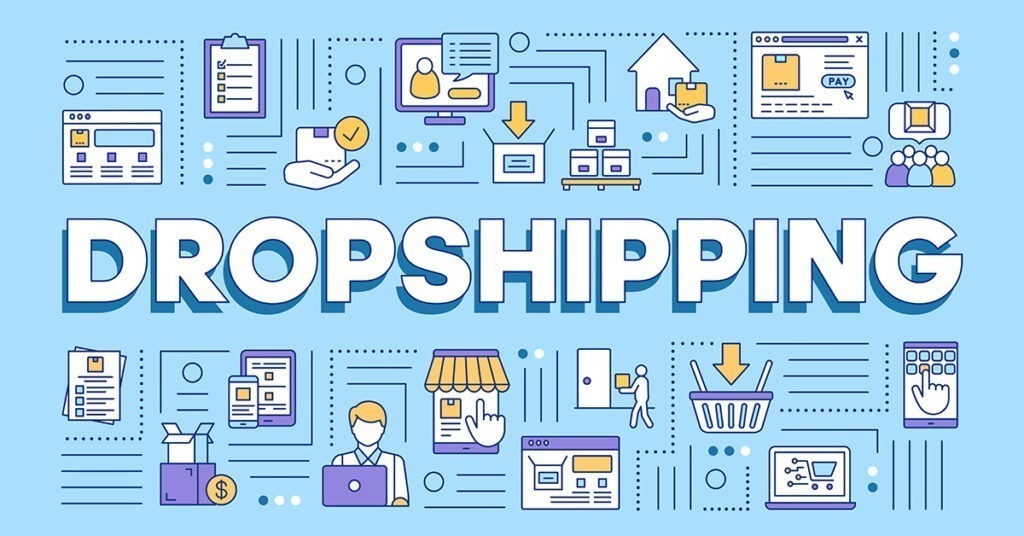Starting a dropshipping store can be one of the smartest and most cost-effective ways to enter the world of e-commerce. Unlike traditional retail businesses that require large inventories and warehouses, dropshipping allows you to sell products online without owning any stock. When customers place an order, you simply forward it to your supplier, who handles packaging and shipping directly to the buyer. This model minimizes financial risk and enables you to focus on marketing, branding, and customer service. However, building a profitable dropshipping store is not just about listing products and waiting for sales. It requires strategic planning, research, and consistent effort. Here’s a detailed guide on how to start a successful dropshipping business.
1. Understand the Dropshipping Model:
Before you begin, you need to understand how dropshipping works. In this business model, you act as the middleman between the supplier and the customer. You list products on your online store, customers make purchases, and you forward those orders to your supplier, who fulfills them. The difference between the supplier’s price and your selling price becomes your profit.
While it sounds simple, success depends on how effectively you choose your products, manage your suppliers, and market your store. Understanding the flow of operations will help you avoid common pitfalls such as delayed shipping, poor product quality, or customer dissatisfaction.
2. Choose a Profitable Niche:
The foundation of every successful dropshipping store lies in selecting the right niche. A niche is a specific segment of the market that caters to a particular group of customers with shared interests or needs. Rather than selling everything, focus on a narrow area where you can establish expertise and brand identity.
When choosing a niche, consider factors such as profitability, competition, demand, and audience engagement. Look for products that solve a problem, appeal to emotions, or are hard to find locally. Examples include fitness accessories, eco-friendly products, pet supplies, or tech gadgets. Avoid overly saturated niches unless you can offer something unique or target a specific audience within that category.
3. Conduct Market and Product Research:
Once you’ve chosen a niche, the next step is to research the market and find winning products. Analyze current trends using tools like Google Trends, AliExpress Dropshipping Center, or product research platforms such as Ecomhunt and Niche Scraper.
Focus on products that are lightweight, affordable, and easy to ship. Check customer reviews, demand patterns, and potential profit margins. Study your competitors’ stores to understand their pricing, marketing style, and product presentation. This research will guide your product selection and help you identify opportunities for improvement.
4. Find Reliable Suppliers:
A good supplier is the backbone of any dropshipping business. You must partner with suppliers who offer high-quality products, fast shipping times, and responsive communication. Platforms like AliExpress, Alibaba, CJ Dropshipping, and Spocket provide access to thousands of verified suppliers.
Before committing, order a few samples to test the quality and shipping time yourself. Read supplier reviews and ensure they can handle bulk orders efficiently. Establishing a good relationship with your supplier helps you negotiate better prices and ensures smooth operations.
5. Choose the Right E-commerce Platform:
To run your store effectively, you need an e-commerce platform that supports dropshipping. Popular options include Shopify, WooCommerce (on WordPress), BigCommerce, and Wix.
Shopify is often the preferred choice for beginners because of its ease of use and integration with many dropshipping apps like Oberlo, DSers, and Zendrop. Choose a plan that fits your budget and offers scalability as your business grows. Customize your store’s design to reflect your brand’s personality and ensure it looks professional, clean, and user-friendly.
6. Build a Strong Brand Identity:
In the competitive dropshipping market, branding is what sets you apart. Since many stores may sell similar products, your success depends on how you present yourself. Create a memorable store name, logo, and color scheme that reflect your niche. Write engaging product descriptions that highlight benefits, not just features, and use high-quality images.
Your website should build trust and make customers feel confident about purchasing from you. Include clear contact information, a return policy, and positive testimonials or reviews. The stronger your brand identity, the more likely customers will remember and recommend you.
7. Set Up Competitive Pricing:
Pricing is crucial in dropshipping. You need to find a balance between profitability and competitiveness. Research what similar stores are charging for the same products and determine a pricing strategy that gives you an edge.
Consider factors like product cost, shipping fees, transaction charges, and marketing expenses. A common approach is to apply a markup of two to three times the supplier’s cost, but the exact figure depends on your niche and target market. Always aim for a price that reflects value while remaining attractive to customers.
8. Develop a Strong Marketing Strategy:
Marketing is the engine that drives sales in dropshipping. Since you don’t control product manufacturing or shipping, your main job is to attract customers. Social media advertising is one of the most effective methods, especially on platforms like Facebook, Instagram, and TikTok. Use visually appealing ads, influencer partnerships, and short video content to showcase your products in action.
Search engine optimization (SEO) is also important. Optimize your product titles and descriptions with relevant keywords so your store ranks higher on Google searches. Consider starting a blog that provides useful content related to your niche. For example, if you sell fitness products, write articles about workout tips or healthy living.
You can also build an email list to send promotional offers, product updates, and personalized recommendations. Retargeting ads can help you bring back visitors who didn’t make a purchase the first time.
9. Offer Excellent Customer Service:
In dropshipping, customer trust is your most valuable asset. Provide prompt, friendly, and helpful responses to all inquiries. Keep customers informed about their order status and handle refunds or complaints professionally. Even though you don’t ship products yourself, you’re still responsible for the overall customer experience.
Good customer service turns one-time buyers into repeat customers and helps you gain positive reviews, both of which are essential for long-term growth.
10. Analyze, Optimize, and Scale:
Once your store is running, track your performance using tools like Google Analytics, Facebook Pixel, and your e-commerce dashboard. Monitor your sales, conversion rates, and website traffic to identify what’s working and what’s not.
Experiment with different marketing strategies, product offers, and website layouts. Gradually scale your business by expanding your product range, entering new markets, or investing more in ads that deliver high returns.
Consistency is key. The most successful dropshipping entrepreneurs are those who test, learn, and adapt continuously.
In Conclusion, Starting a profitable dropshipping store is not about luck; it’s about strategy, persistence, and smart decision-making. Choose the right niche, find reliable suppliers, build a strong brand, and focus on marketing and customer satisfaction. While the competition is high, the opportunity is even higher for those who approach it with patience and professionalism. With the right mindset and consistent effort, you can build a sustainable dropshipping business that generates real income and long-term success.




